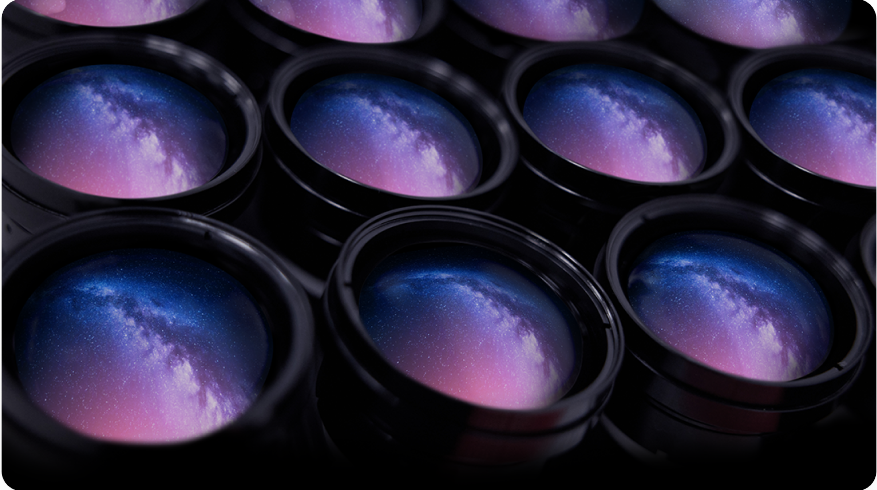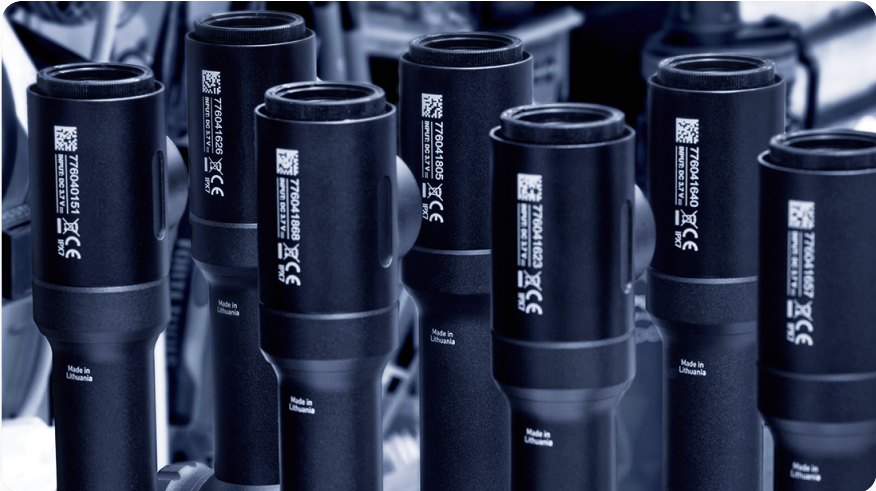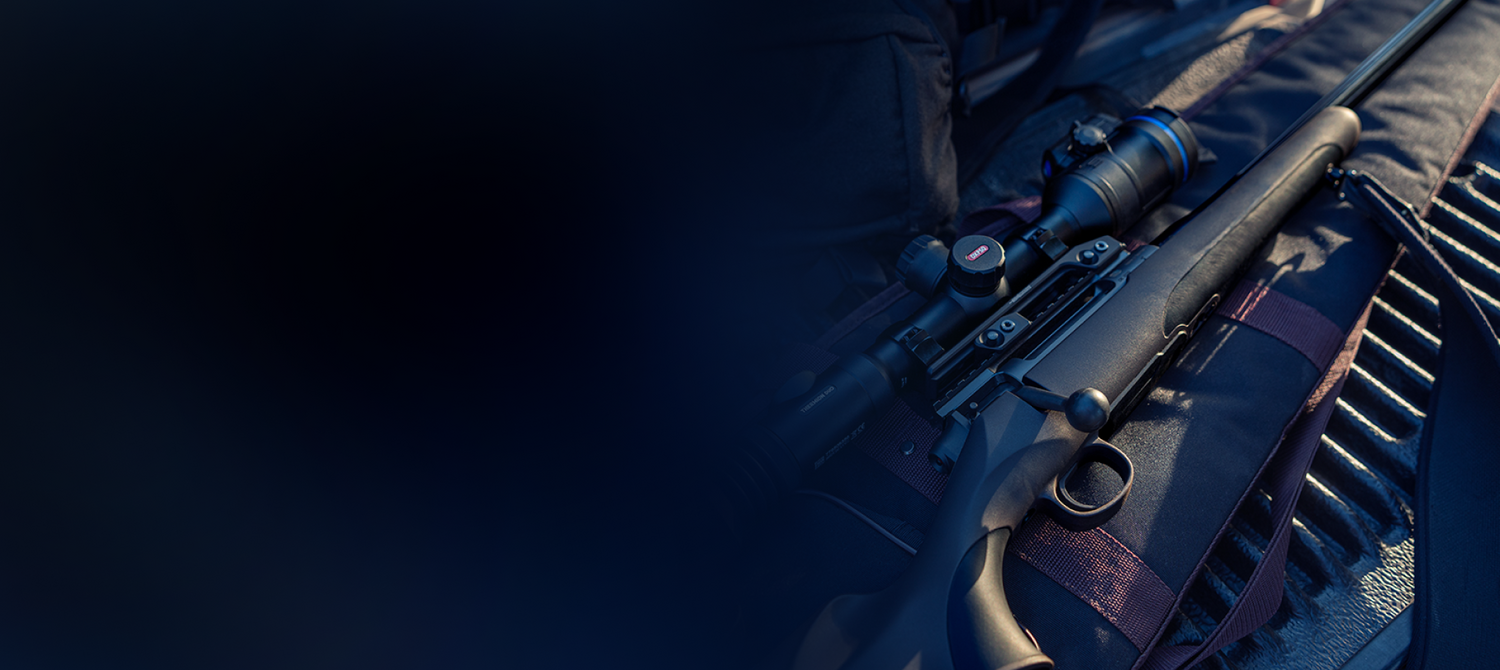

About Us

Pulsar: See the Invisible

PULSAR is part of Yukon Advanced Optics Worldwide, a high-tech European company group with its head office located in Lithuania. Based in the North-Eastern part of Europe, we are constantly inspired by the surrounding nature, green woods, endless meadows, and calming rivers of this land. Yet we are driven by the passion to see what is beyond the visible, to reach for the invisible, and to make a sight an unforgettable moment.


Passion for Expanding Human Abilities
Our history dates back to 1991. It was started by a group of friends who shared the same passion for expanding human abilities. This group of enthusiasts used to assemble the first few wooden observation tubes in the basement of an unfinished residential building.
Three decades later PULSAR proves to be the top worldwide brand of thermal and digital day & night vision imaging devices, becoming a trend-setter and innovation leader in the sector. One thing that has not changed over time, is the same passion that drove the founders in the very beginning and which we now share with more than 1200 colleagues around the globe. Our company has come a long way and this journey grows more exciting every day.
Being a hi-tech company, we strive for innovation and novelties in every next step we take. We look for new ways to upgrade and use the most advanced technologies to experience the natural world and empower outdoor adventurers around the world.

Made in Europe flag

We proudly carry the Made in Europe flag. All PULSAR products are developed, designed, manufactured, packed, and sent out to our worldwide distributors from our factories in Europe.
We develop optics and electro-optics with enhanced functionality for both professional and leisure adventures. In-house produced firmware and software guarantee optimisation and essential quality of our devices. Through continuous technological innovation, we seek to enhance human abilities and provide one’s mastery and greater success in unfavourable nature conditions.
Our thermal imaging and day & night vision devices are used in almost all countries and continents by a wide community of:
- Hunters
- Security industries
- Fishermen and women
- Rescuers
- Animal & nature research observers
- Outdoor enthusiasts
- Mariners


Uncompromising Quality and Comfort of Use
In an extremely fast-paced world, we endeavour to provide you with products that would eliminate natural constraints that slow you down to enable you to focus on what is most important.
We believe the joy of every new experience comes with the ability to relive the moment and to see it with your own eyes. We want you to experience the full range of this excitement, therefore we never compromise on the quality and comfort of PULSAR devices and they prove to be distinguished by their high usability.
Launching multiple new products every year, we aim to be the trendsetters of the niche and to ensure the greater success of our community in unfavourable nature conditions. Pulsar’s professional product line consists of thermal and digital both day & night vision devices for civilian use only. (https://www.pulsar-nv.com/glo/support/export-and-sales-restriction-policy/200/)
- Monoculars
- Clip-ons
- Binoculars
- Software & firmware
- Riflescopes
Being a flagship brand for responsible consumption and production in the niche, we invite you to join our tribe of ethical, responsible, and conscious outdoors enthusiasts who trust and support each other, as well as the environment we live in.
History of the Company

1991
Beginning of the Story
The team of engineers that would give life to Pulsar start work in Lida, Belarus, one of the centers of advanced optics research and production for the Soviet Union.
1998
The effort goes international when efforts are combined with an American team from Mansfield, Texas.
1999
The production of its first night vision device start. The device was a generation 1 monocular that was followed by a generation 1 binocular. These devices were among the first to utilize multiple settings of the IR and were the first to incorporate a dual IR system.
2001
The innovation in night vision continues with the introduction of generation 1 night vision riflescope. Another innovation was a night vision riflescope that utilized a titanium housing, a first for non-military applications.
2002
Production of generation 2 and generation 3 starts in Mansfield, Texas. The night vision riflescopes get a technical boost when they were modified to utilize generation 2 and generation 3 night vision intensifier tubes that were developed for the military. This not only significantly enhanced the detection range of the products, but meant the performance was on the same level of devices used by the military.
2003
In addition to successful models that were released to the market in 2003, two major accomplishments were made that would have major impact on the optics industry. This was the year that the first multi-tasking night vision device was created for non-military applications, years ahead of its time. The second major development was in the initial research into applying digital sensors to traditional optics. This was yielding amazing performance enhancements that would also revolutionize the optics industry.
2004
The first successful digital night vision optic was officially introduced and the public response was extremely favorable. No other company was able to produce a viable digital night vision device of equal performance to this first unit for nearly a decade. This technology has been undergoing continuous improvements and is the reason why Pulsar is still the leader in digital night vision systems today.
2005
Growth and success of the night vision market, yielded an amazing 70% of the global gen 1 market, including the supply of products to some of the most well-known optics brands.
2006-2008
The company began to further broaden its range of night vision, specifically in the form of digital night vision and vastly improved traditional night vision devices. This expansion left the company to create a new brand that would serve a higher-end customer, professional users and law enforcement agencies. This strategy lead to the creation of a new trademark called Pulsar. This trademark is the symbol of technological achievement and a dedication to continuous innovation to make the most advanced night vision systems anywhere.
2009
Pulsar officially launched in Europe in 2009 and also unveiled the Digisight digital night vision riflescope at IWA in Europe and SHOT Show in the U.S. This series has been updated and is still recognized as the best performing digital riflescope ever produced and was the first digital night vision riflescope on the market. The Digisight also introduced many other features never seen before in a digital night vision riflescope: first to use one-shot zero, first to use an advanced in-view menu system, first to use a remote activation pad, first to provide both contrast and brightness adjustments, first to provide external power, first to use battery packs allowing longer use in the field, the first to provide a video output for recording, and first to use flip up built in lens caps. Also this year, Pulsar and Sellmark initiated a strategic partnership as its official presence in North America.
2011
Production of thermal night vision started with the introduction of the Quantum thermal series. The first Quantum is recognized as providing the best software interface, best optical adjustment options, and best optical performance. Also this year, Pulsar established full customer service and tech support in the United States to management the growth and success of the brand.
2012
This year marked another first for a major innovation for the night vision market. Pulsar was the first to develop a digital night vision attachment, the DFA Forward. This unit attaches to the front of a traditional day scope, converting the riflescope into a powerful night vision optic that does not require re-zeroing. Pulsar generation 2 and generation 3 optics were produced in Mansfield, Texas, marking a return to US production and expansion after a four-year pause.
2013
Another first on the market, Pulsar introduced the first night vision optic with built in range finder on the Pulsar Digisight LRF that allowed seamless hunting at night at various distances.
2014
Pulsar debuts its first thermal night vision riflescope, the Apex, with many firsts in its category including: picture in picture display mode, one shot zero, and a thermal iris algorithm for enhanced detection recognition.
2015
Pulsar develops the Core, a new thermal night vision dual-purpose monocular and riflescope unit. This optic is special in that it allows users to have a thermal unit that can be used as a standalone monocular as well as a riflescope by utilizing a specialized attachment system.
2017
A premium manufacturer with an unwavering commitment to image quality, Pulsar pioneered and dominated the consumer thermal and night vision market throughout 2017 with cutting-edge integrated video and Wi-Fi technology designed to simplify live streaming and multi-purpose connectivity with smartphones and other personal devices.
2018
In 2018, Pulsar continues to deliver affordable, top-shelf performance and reliability while adding and enhancing real-world features people actually use like our proprietary picture-in-picture, one-shot zeroing, laser rangefinder and the free, Wi-Fi supported Stream Vision app without complicating device operation.

